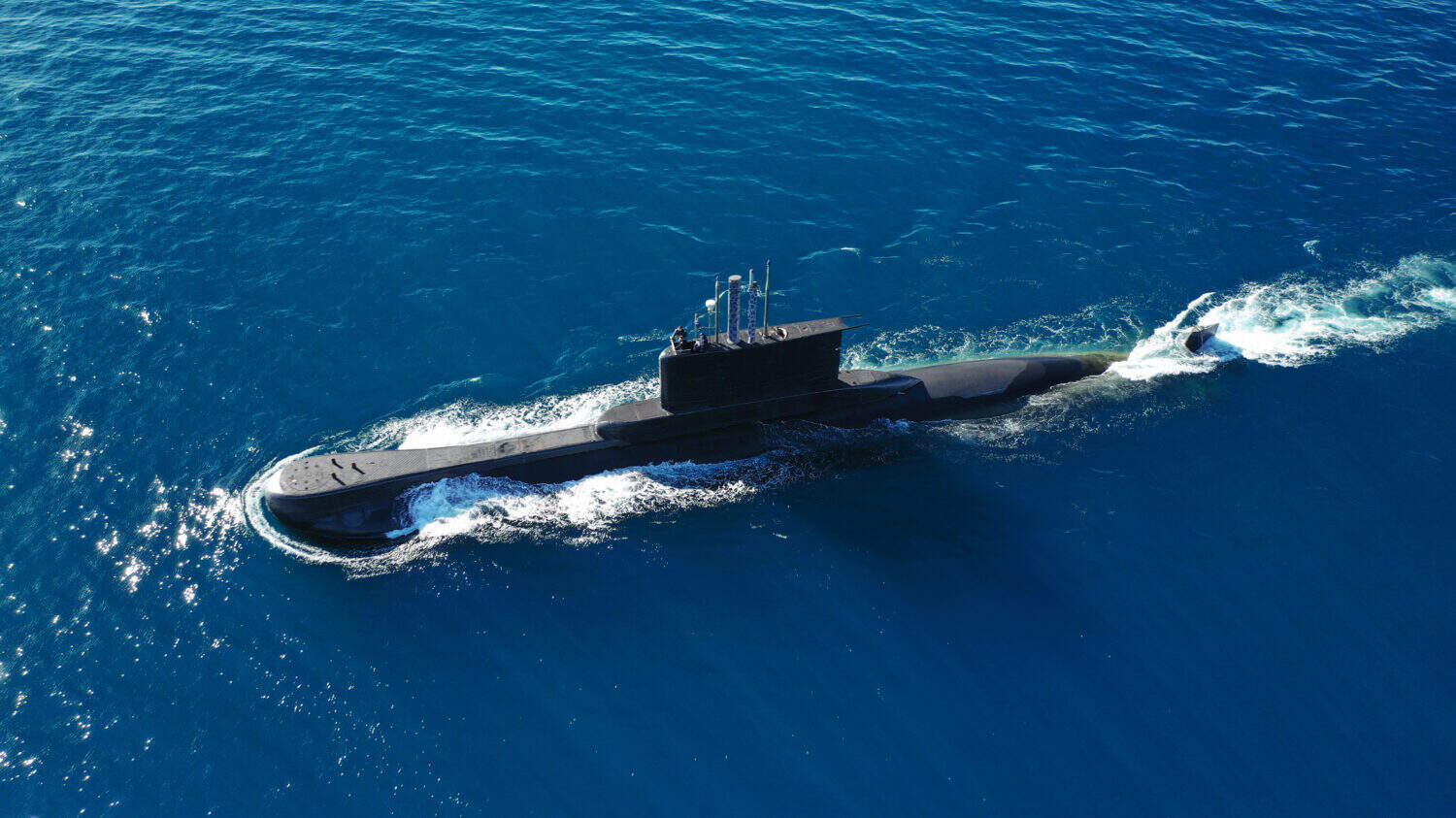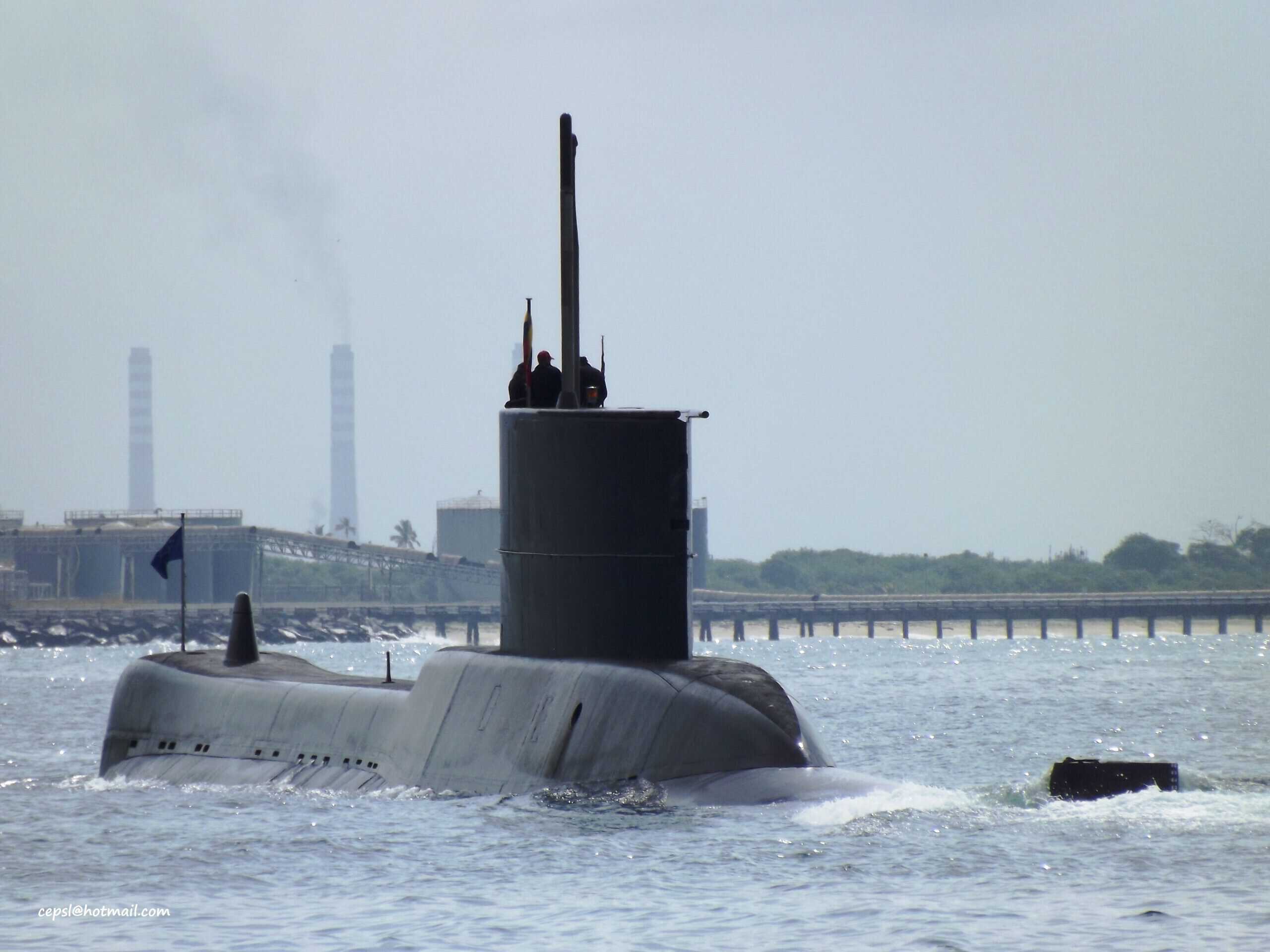Military
American Ally Gains Elite Military Status with New Nuclear Submarine Capabilities

Published:

As the leading military power in South America, Brazil is leading the charge in this submarine revolution by acquiring the first nuclear-powered submarine on the continent. The Álvaro Alberto is expected to be delivered within the next decade.
This new nuclear submarine will be the first of its kind that is operated by a country outside of the five permanent members of the U.N. Security Council (with the exception of India). Owning a nuclear submarine is more or less a mark of military supremacy at this point. (45% of all NATO Allied Forces’ submarines belong to this country.)
The Álvaro Alberto is based on the French Scorpène-class and is part of a strategic partnership signed between France and Brazil in 2008. This is just one example of the strides that South American navies have been making towards overall modernization.
South American navies have been evolving with the times and are employing more submarines now than ever before. Submarines give a distinct advantage allowing for improved maritime security but in a more discreet manner than having overpowering frigates or destroyers. Here, 24/7 Wall St. is taking a look at the submarine forces of South America.
To identify the South American countries with the most military submarines, 24/7 Wall St. reviewed 2024 Military Strength Ranking from Global Firepower, an annually updated defense-related statistics website with information on 145 countries. Countries were ranked on the total number of military ships and submarines in their fleet. We included supplemental information regarding aircraft carriers, destroyers, corvettes, patrol vessels, and frigates, as well as each country’s overall military strength score. We excluded countries that did not have any submarines.

Understanding the military dynamics of South America is important considering the region’s evolving geopolitical landscape and its strategic importance. Historically, South America has experienced internal conflicts and border tensions, but its military presence is now key in maintaining regional stability and security.

In terms of its ground forces, Ecuador has 5,662 military vehicles (including 55 tanks, 155 artillery units, and 35 MLRS units). Ecuador has 41,250 active-duty personnel out of a total population of 17.5 million.
Throughout the 20th century, Ecuador experienced multiple military coups, most notably in 1972 when General Guillermo Rodríguez Lara took control of the government. His rule lasted until 1979, when the country shifted back to democratic rule. However, like many other South American countries, the people were wary of military power.
Today, the main responsibilities of Ecuador’s military are protecting its national sovereignty, addressing security threats like drug trafficking, and providing disaster relief where needed.

Venezuela is an interesting case study in militaries in South America. Some might argue that it is still under military rule, and that it has not returned to democratic rule like other nations on the continent.
Although the country had returned to democratic rule in the 1950s after suffering a number of coups and instability, it would ultimately revert back in 1999 when Hugo Chavez rose to power. Chavez was a former military officer and gained popularity with the citizenry, enough to create a citizen militia that blurred the lines between politics and military.
Chavez’s successor, Nicolas Maduro, is currently in power and he is seeking a third term as the President of Venezuela. Again, critics will argue the electoral process in Venezuela is less than transparent. However, one thing Maduro has done is grow the military.
Venezuela has nearly 110,000 active military personnel, but this is dwarfed by its paramilitary forces numbering around 220,000. Much of these paramilitary forces like the Bolivarian Militia are made up of citizens.
Outside of this, the military operates 14,966 military vehicles, including 180 tanks, 164 artillery units, and 36 MLRS units.

In terms of its ground forces, Argentina has 21,724 military vehicles (including 348 tanks, 222 artillery units, and 26 MLRS units). Argentina has 108,000 active-duty personnel out of a total population of 46.6 million.
Throughout the 20th century, Argentina suffered through multiple wars and dictatorships. This largely crafted how the Argentine Armed Forces handles itself today.
One of the most infamous instances was the Dirty War that took place from 1976 to 1983. General Jorge Rafael Videla overthrew the government and, through the military, targeted people it suspected of opposing the government, resulting in the disappearance, torture, and death of thousands. This was part of a larger collaboration, Operation Condor, between dictatorships across the continent.
Ultimately, this dictatorship would come crashing down when Argentina fought the Falklands War against the United Kingdom. The defeat was a major blow to the dictatorship and resulted in the people turning against the government and back towards democratic rule. With this push, the military waned in influence in the decades to come.
Chile’s military, known as the Chilean Armed Forces, consists of three branches: the Army, Navy, and Air Force. In terms of its ground forces, Chile has 9,492 military vehicles (including 270 tanks, 273 artillery units, and 20 MLRS units). Chile has 80,000 active-duty personnel out of a total population of 18.5 million.
Like its neighbors, Chile has an interesting history of military and politics. Known as one of the most brutal dictators of South America, General Augusto Pinochet took control of the Chilean government in 1973. Pinochet ruled as a military dictator until 1990, with many human rights abuses and political repression. The military also saw a massive expansion during this time adding tanks and aircraft to its arsenal.
Pinochet was also famous for his involvement in Operation Condor, where dictatorships across the continent moved to snuff out or suppress their political rivals in a collaborative effort. This covert operation would ultimately strengthen the military’s grasp over Chile and any dissidents that might oppose it.
After Pinochet lost power in 1990, the military was relegated to a much lesser role. Since then, the military has focused more on national security as well as disaster relief, especially since Chile is prone to natural disasters like earthquakes and tsunamis.
In terms of its ground forces, Peru has 7,896 military vehicles (including 261 tanks, 298 artillery units, and 73 MLRS units). Peru has 120,000 active-duty personnel out of a total population of 32.4 million.
Peru has a long military history, including several coups and times of military rule. These events helped shape the Peruvian Armed Forces into what they are today, with more of a focus on security and defense. Even though the military now has a smaller role, it is still one of the stronger forces in South America.
General Juan Velasco Alvarado held power over the country between 1968 and 1980, ultimately implementing land reforms and nationalizing key industries. Ironically, Velasco was overthrown in another military coup by General Francisco Morales Bermudez, who actually moved the country back towards a democracy.
In recent decades, the Peruvian military was involved in counterinsurgency operations, notably against the Shining Path, a far-left guerilla group. While the government eventually cut down the group’s influence, the Peruvian military continues to combat what’s left of the group in remote areas of the country. Outside of that, Peru’s military primarily operates in peacekeeping missions and disaster relief.

Colombia has over 2.700 military vehicles and over 290,000 active military personnel. This country is home to the largest helicopter force on the continent. In total it has over 430 military aircraft, and 258 of these are helicopters. Colombia has a handful of interceptor and fighter aircraft as well as over 20 strike and attack aircraft.
Colombia’s military has played a significant role in shaping the country’s politics, and even now it is one of the largest forces in South America. While other nations are mainly focused on peacekeeping and national security, Colombia has a very distinct focus on counterinsurgency and jungle warfare.
For decades Colombia’s military has been fighting against far-left guerrilla groups like the FARC and ELN. The military has been in conflict with FARC since the 1960s, until recently when the group signed a peace agreement and disbanded. The ELN still continues to carry out attacks and is considered to be one of the last guerrilla groups active in Colombia.
Currently, Colombia’s military continues to fight drug cartels and protect its borders. While it does some international peacekeeping missions, its focus is mainly internal.

In terms of its ground forces, Brazil has 44,044 military vehicles (including 469 tanks, 632 artillery units, and 78 MLRS units). Brazil has 360,000 active-duty personnel out of a total population of 218.7 million.
Out of all the countries in South America, Brazil is considered to have the strongest military force. Officially known as the Brazilian Armed Forces, it consists of three branches, Army, Navy, and Air Force. Like every other nation on this list, Brazil had its brush with coups and military dictatorships.
One of the most important periods in time for this country began in 1964, when the military took control of the government. In the wake of the coup, the military regime carried out countless human rights abuses and censored its people. By 1985, Brazil returned to a civilian government but unlike its neighbors, the military still held significant sway for some time.
Now, Brazil’s military is primarily focused on national defense. It has conducted peacekeeping missions with the United Nations to countries like Haiti and Lebanon. The military also works to protect the Amazon rainforest from illegal activities like deforestation or drug trafficking.
Retirement can be daunting, but it doesn’t need to be.
Imagine having an expert in your corner to help you with your financial goals. Someone to help you determine if you’re ahead, behind, or right on track. With SmartAsset, that’s not just a dream—it’s reality. This free tool connects you with pre-screened financial advisors who work in your best interests. It’s quick, it’s easy, so take the leap today and start planning smarter!
Don’t waste another minute; get started right here and help your retirement dreams become a retirement reality.
Thank you for reading! Have some feedback for us?
Contact the 24/7 Wall St. editorial team.